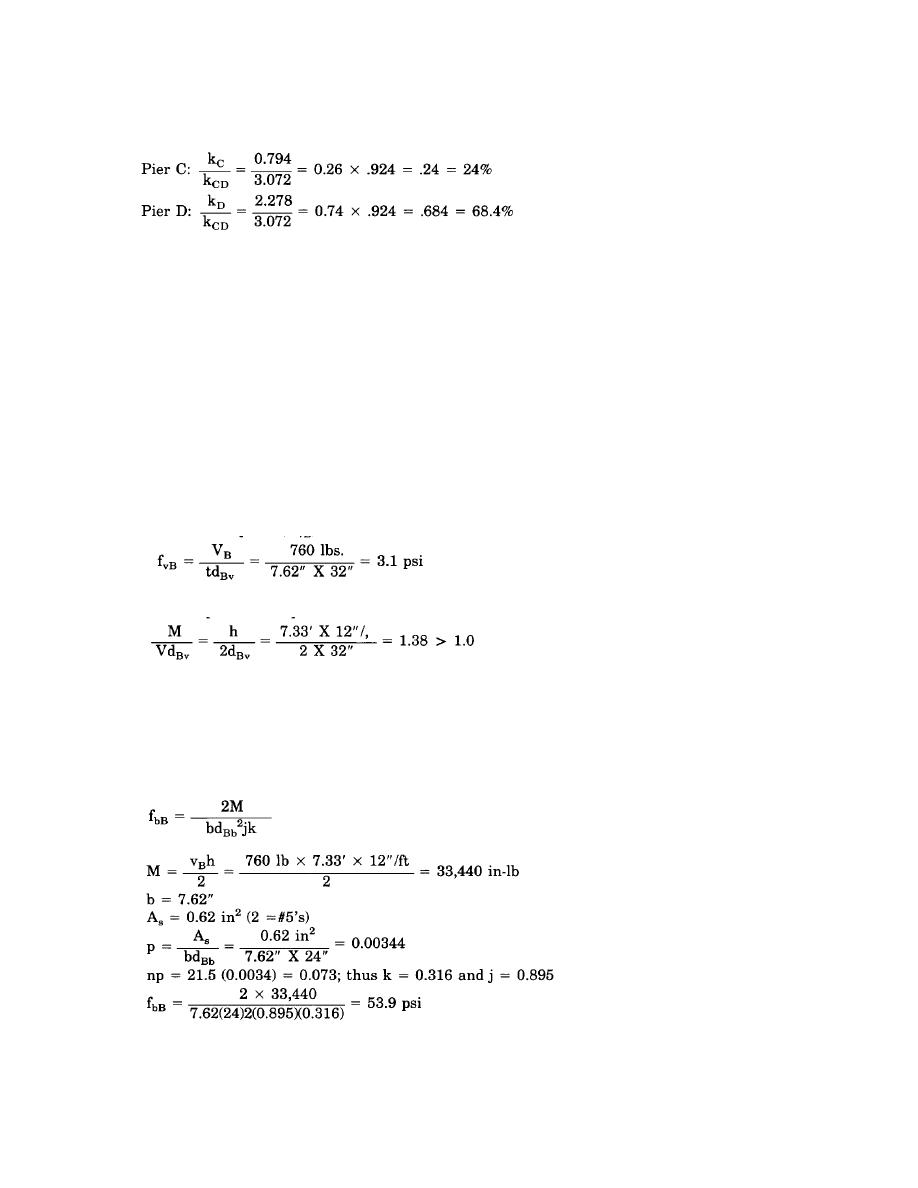
TM 5-809-3/NAVFAC DM-2.9/AFM 88-3, Chap. 3
Thus 7.6% of the total in-plane shear force on the wall will be resisted by Pier B and 92.4% of the force will
be resisted by piers C and D. The 92.4% will be distributed to piers C and D in proportion to their relative
rigidities as follows:
Therefore, 24% of the total shear force on the wall will be distributed to Pier C; 68.4% to Pier D; and 7.6%
to Pier B.
(c) Now that the distribution of in-plane shear forces to each pier is known, the design of the piers
can now be accomplished. The design of each pier will begin by checking the shear and flexural stresses due
to in-plane wind loads. Axial stresses due to dead and live loads will also be checked. The flexural and axial
stresses will then be combined using the unity equation. For loading combinations that include wind loads,
the allowable stresses will be increased 33%.
Pier B design. The design for out-of-plane wind loadings (not part of this example) require that all cells be
reinforced and fully grouted, thus the cross section of the pier is 2*-8" by 7.62" with #5 bars in each cell.
When checking in-plane shear stresses, the assumed length of the pier, dBv, will be the actual pier length or
2*-8". When checking in-plane flexural stresses, the assumed effective depth of the beam section, dBb, will
be the actual length less the 8-inch distance from the centroid of the two end bars to the end of the pier;
therefore dBb = 2*-0".
Shear Check
Lateral force, VB, to Pier B = 7.6% of 10k
VB = 0.076 x 10k = 760 lbs.
Shear stress in pier B, fvB, is determined as follows:
The allowable shear stress assuming no shear reinforcement, Fvm, will be determined by equation 7-2 as
follows (assume pier fixed top and bottom):
Therefore;
Fvm = 1.0(f'm) = (1350) = 36.7 psi.
But shall not exceed 35 psi; thus Fvm = 35 psi.
fvB = 3.1 psi < Fvm = 35 psi x 1.33 = 46.5 psi;
Therefore, no shear reinforcement is required.
Flexural Check. Both flexural compression and tension must be considered.
Flexural compressive stress in Pier B, fbB, is determined as follows:
Where:
Allowable flexural compressive stress in Pier B, Fb, is determined as follows:
Fb = 0.33f*m x 1.33 = 0.33(1350) X 1.33 = 600 psi
FbB = 53.9 psi < fb = 600 psi
...O.K.
Flexural tensile stress in Pier B, fsB, is determined as follows:
7-14



 Previous Page
Previous Page
